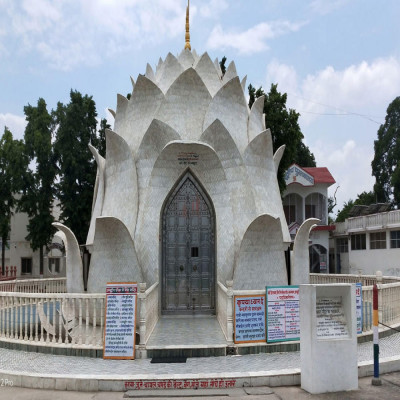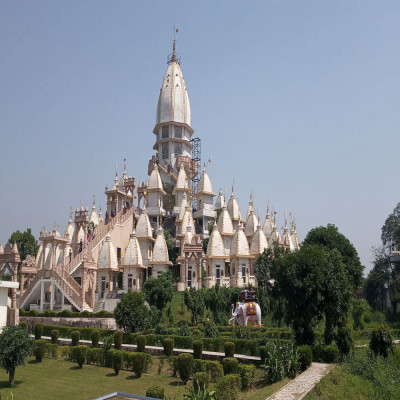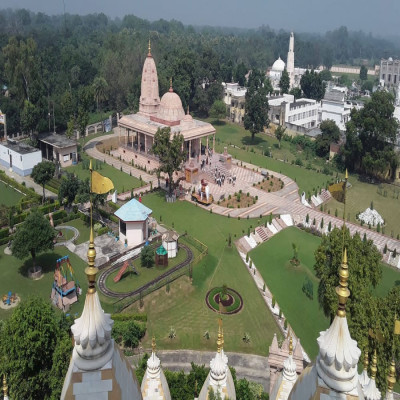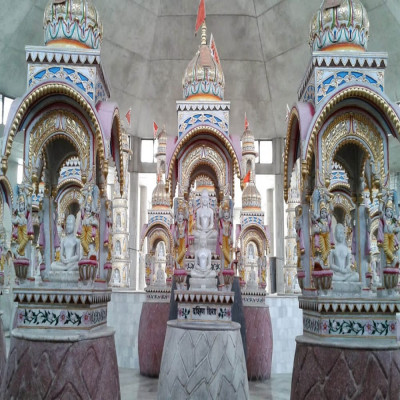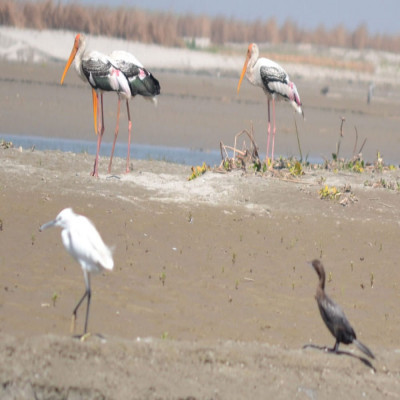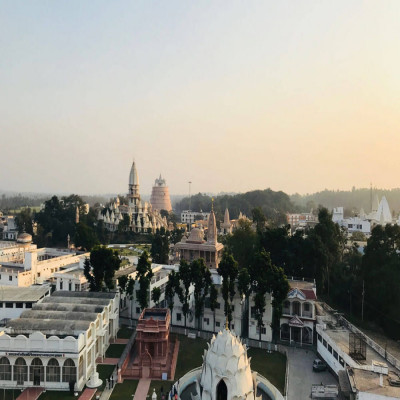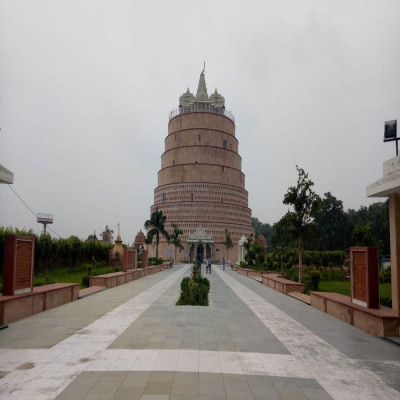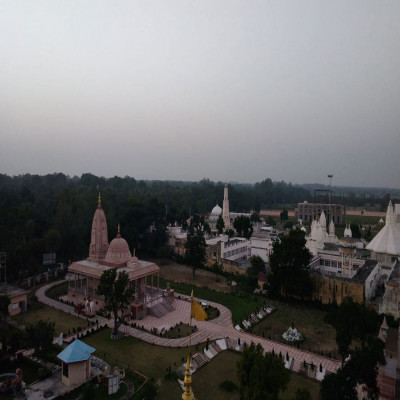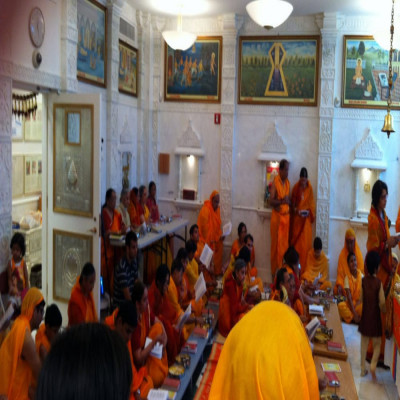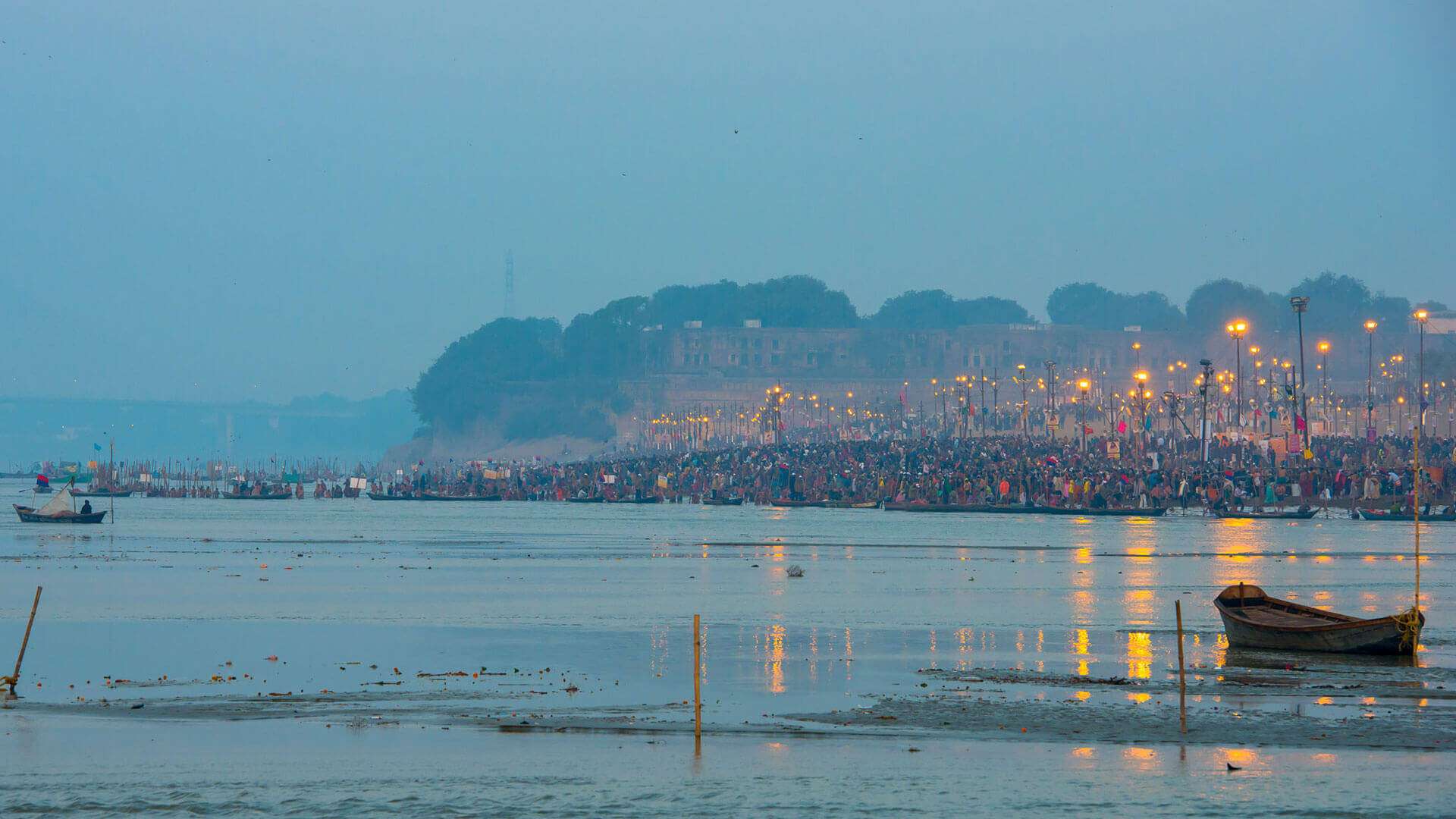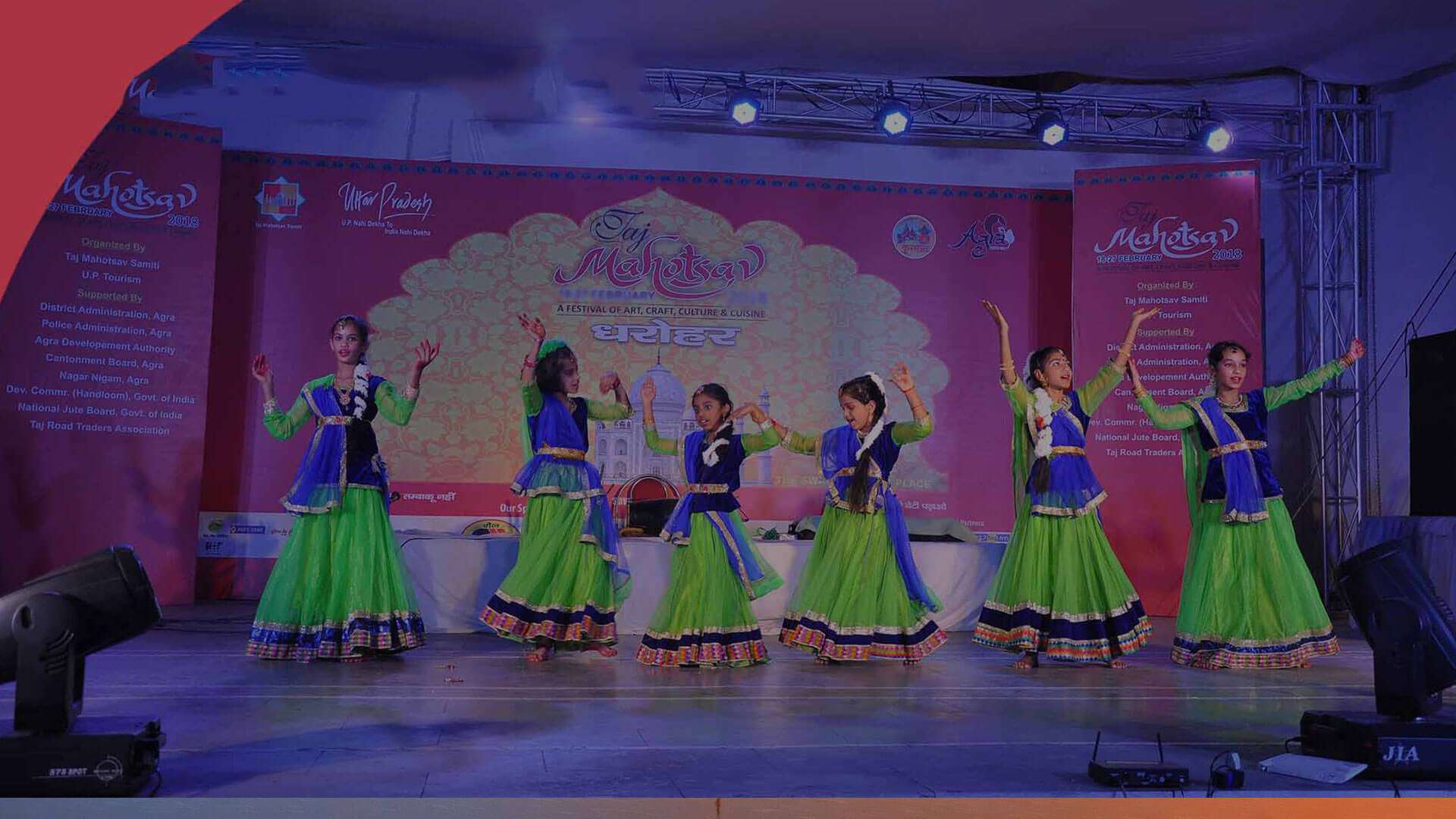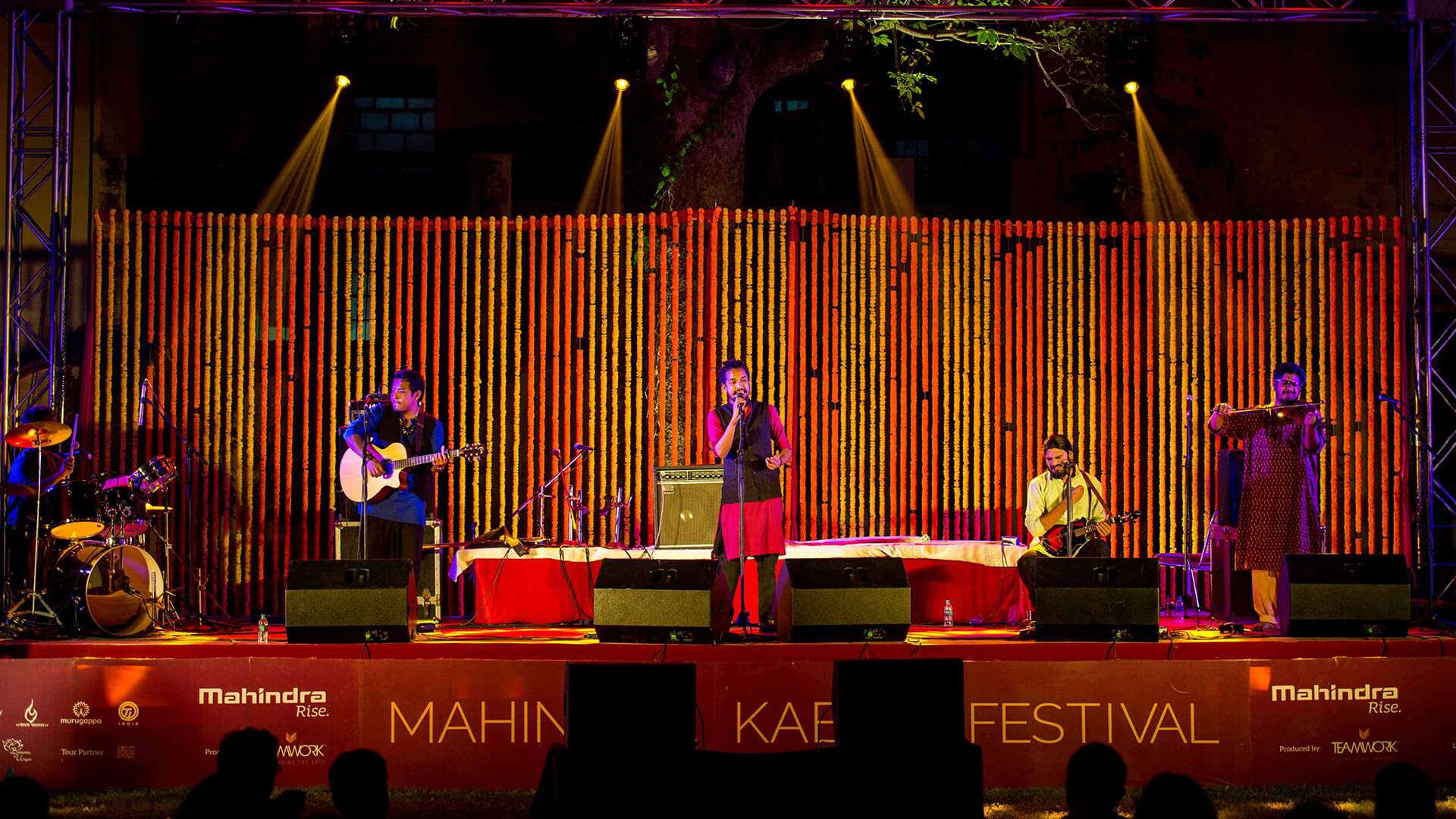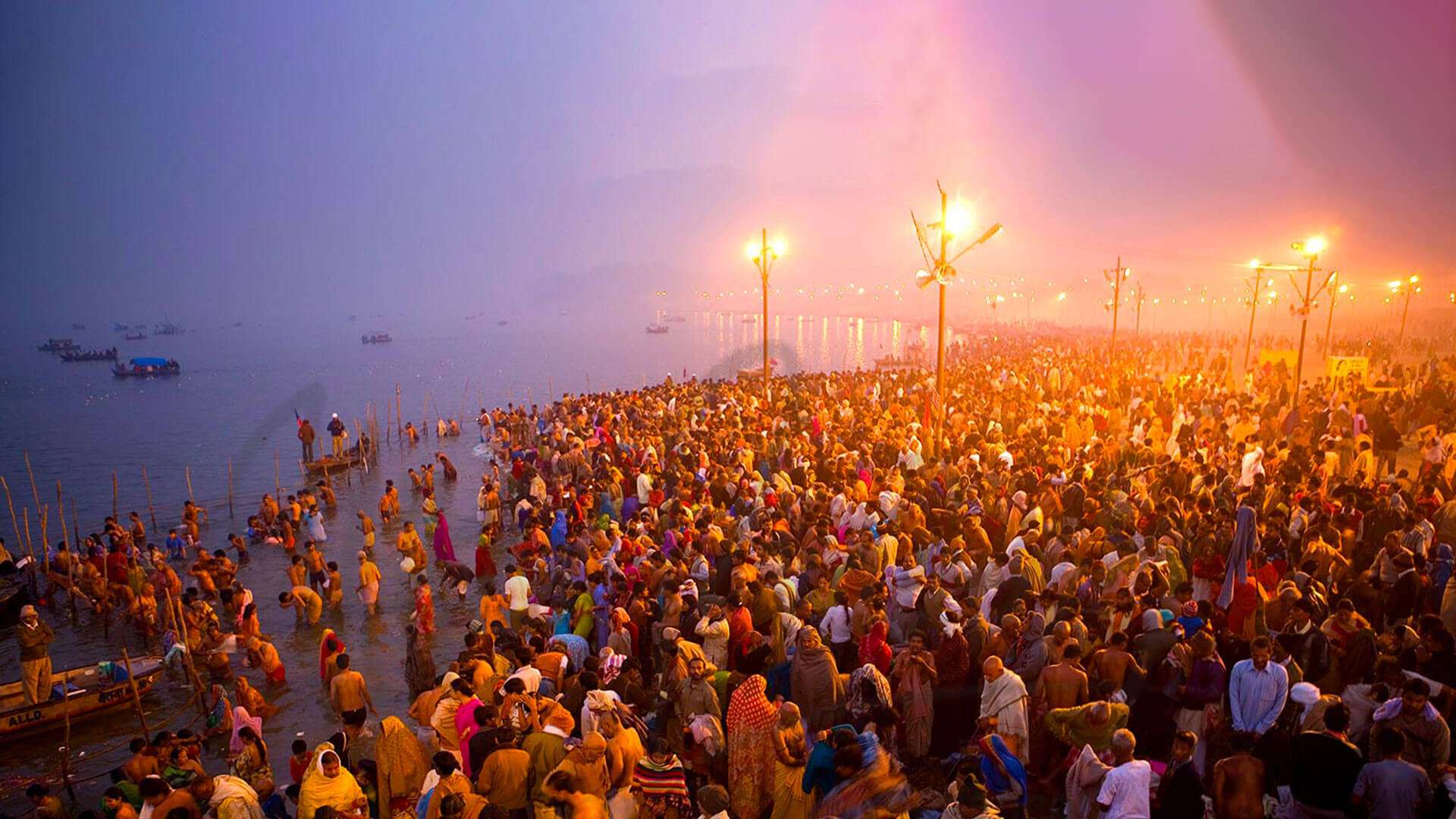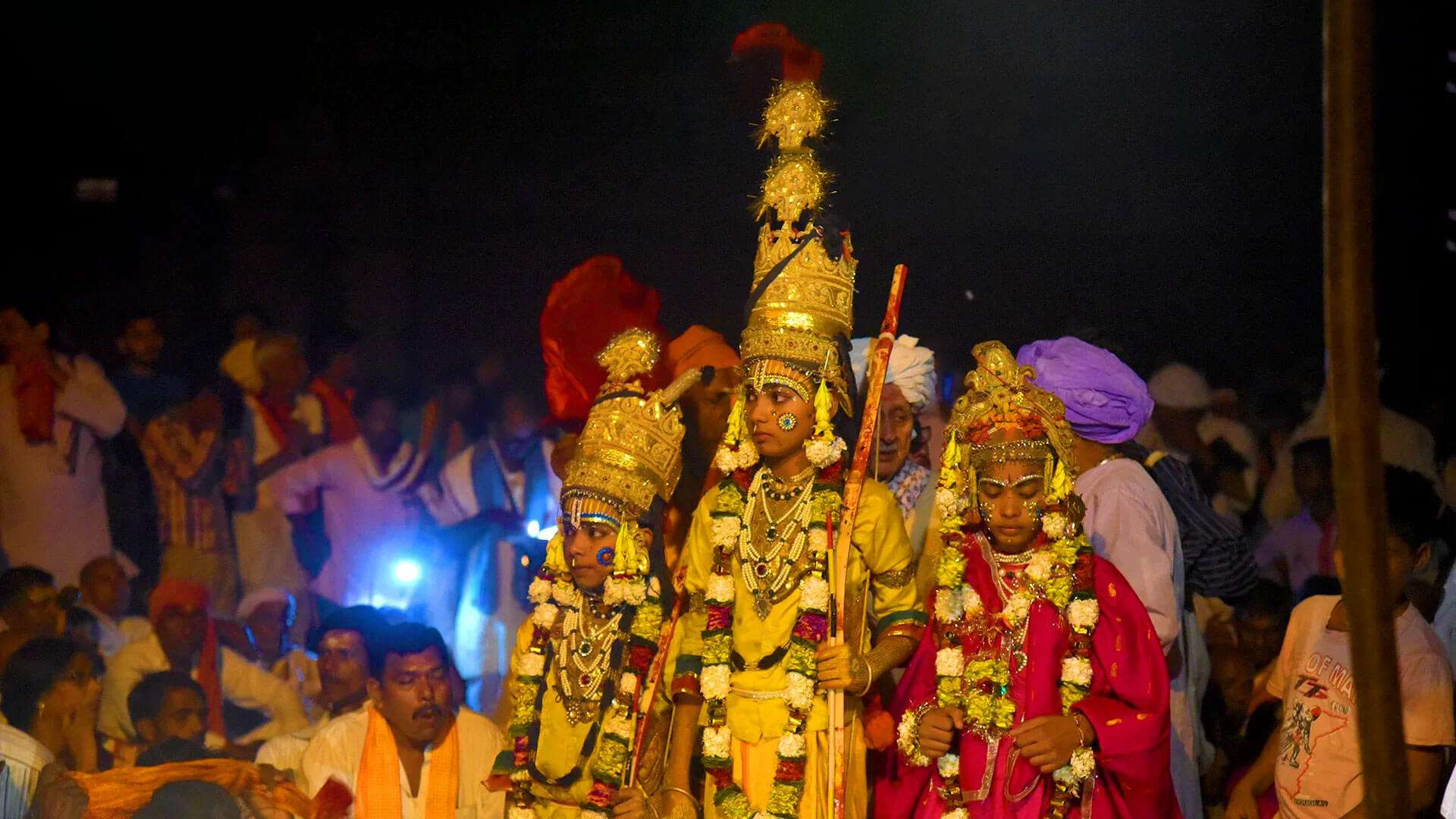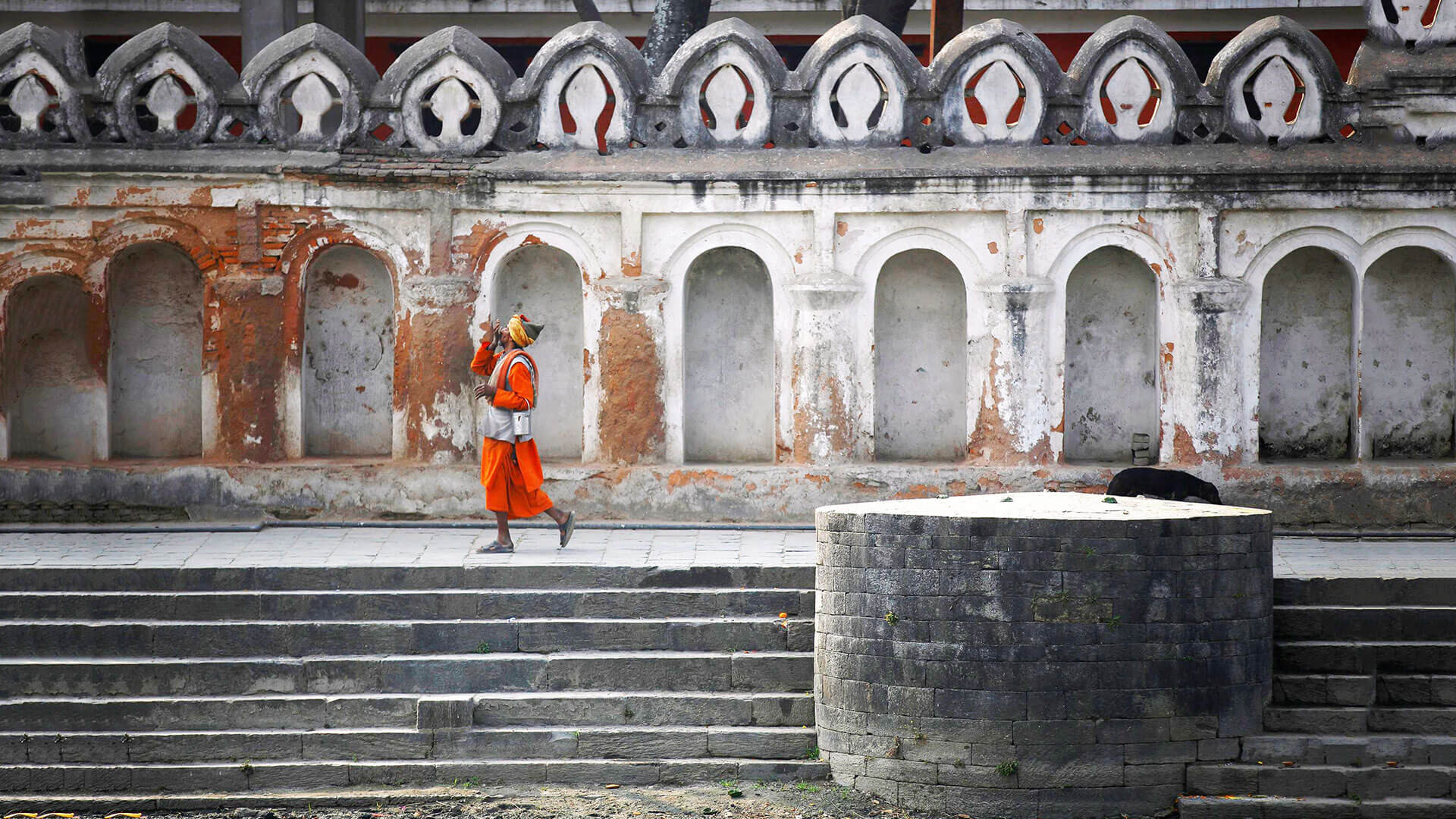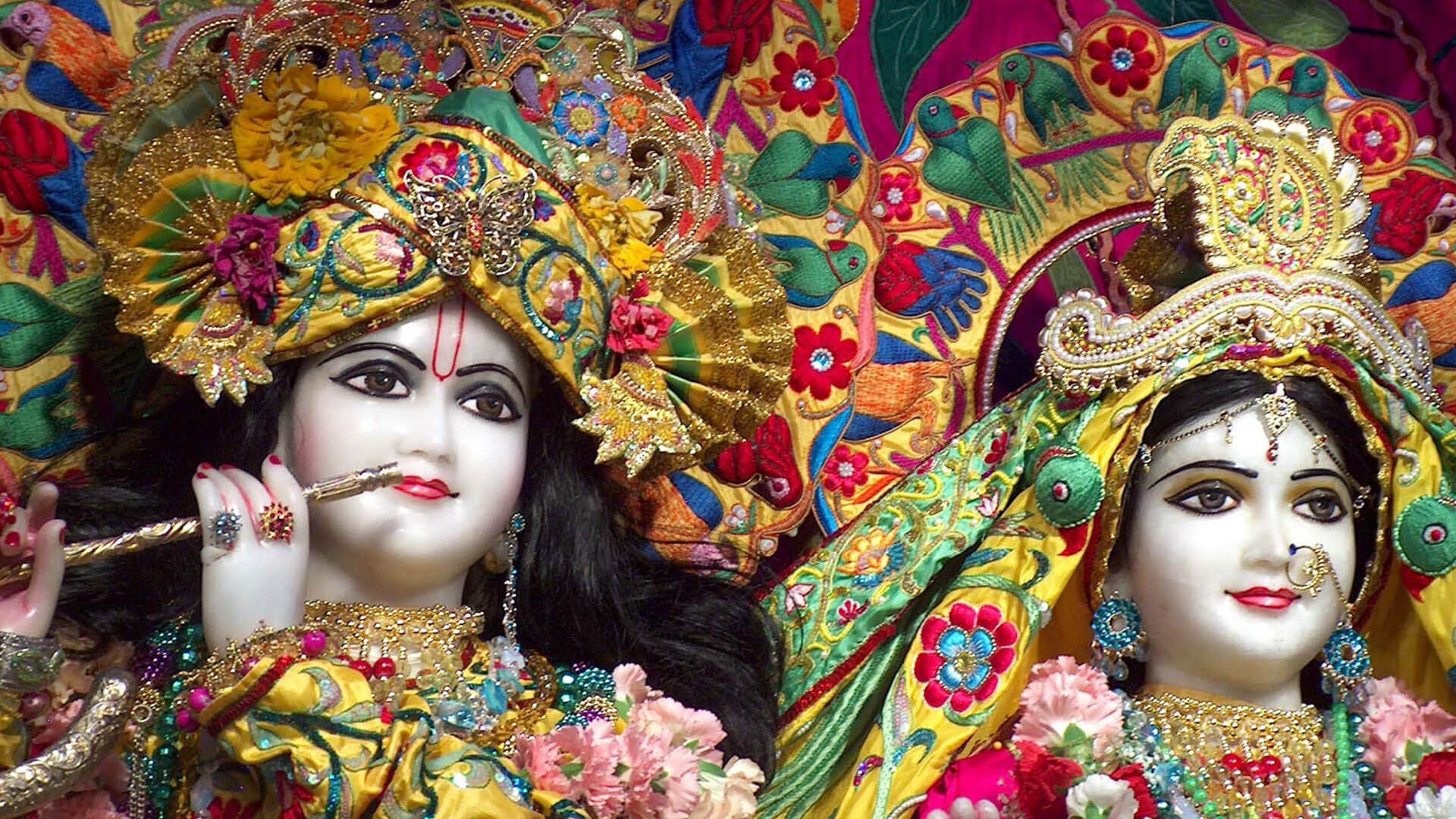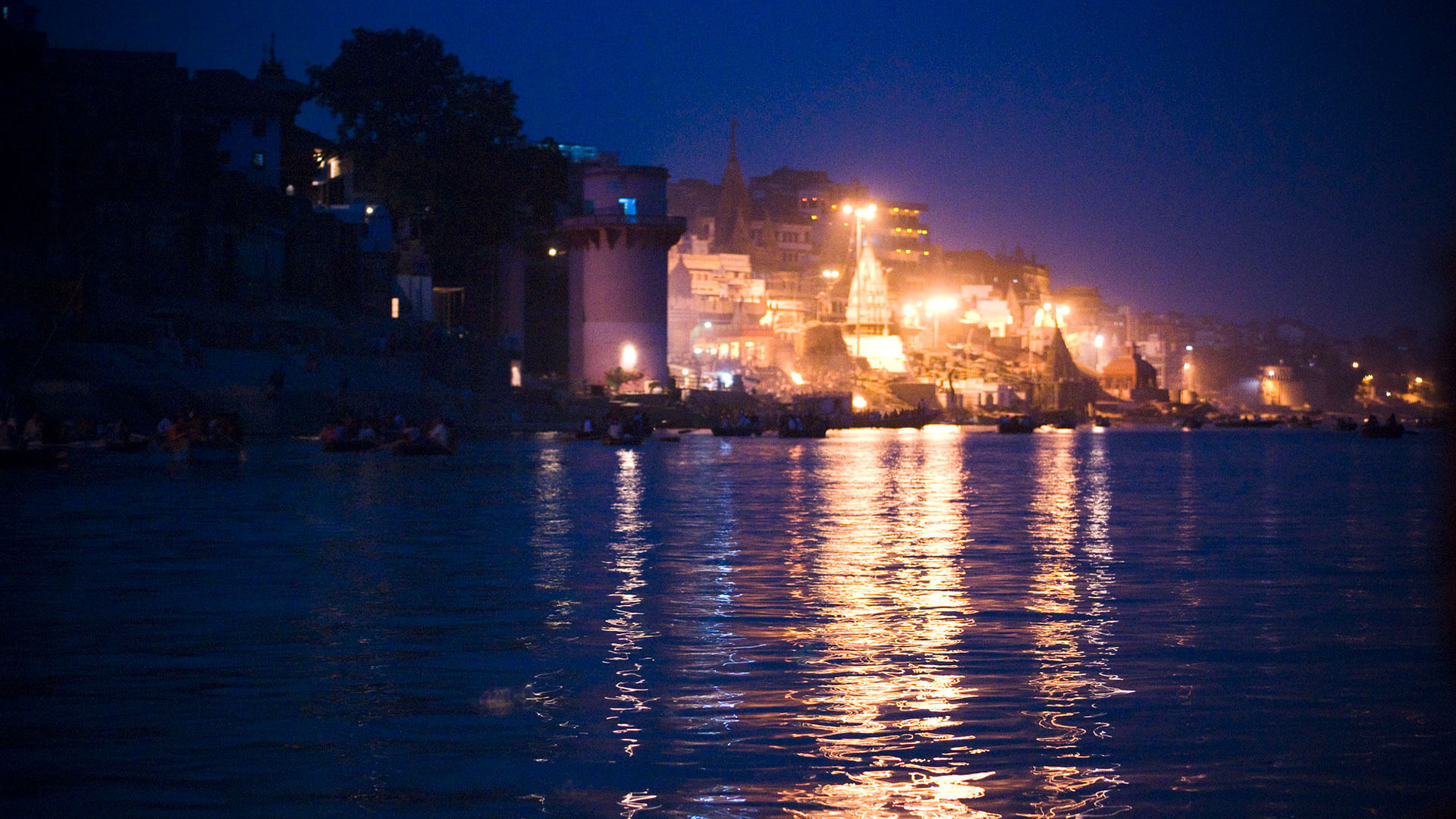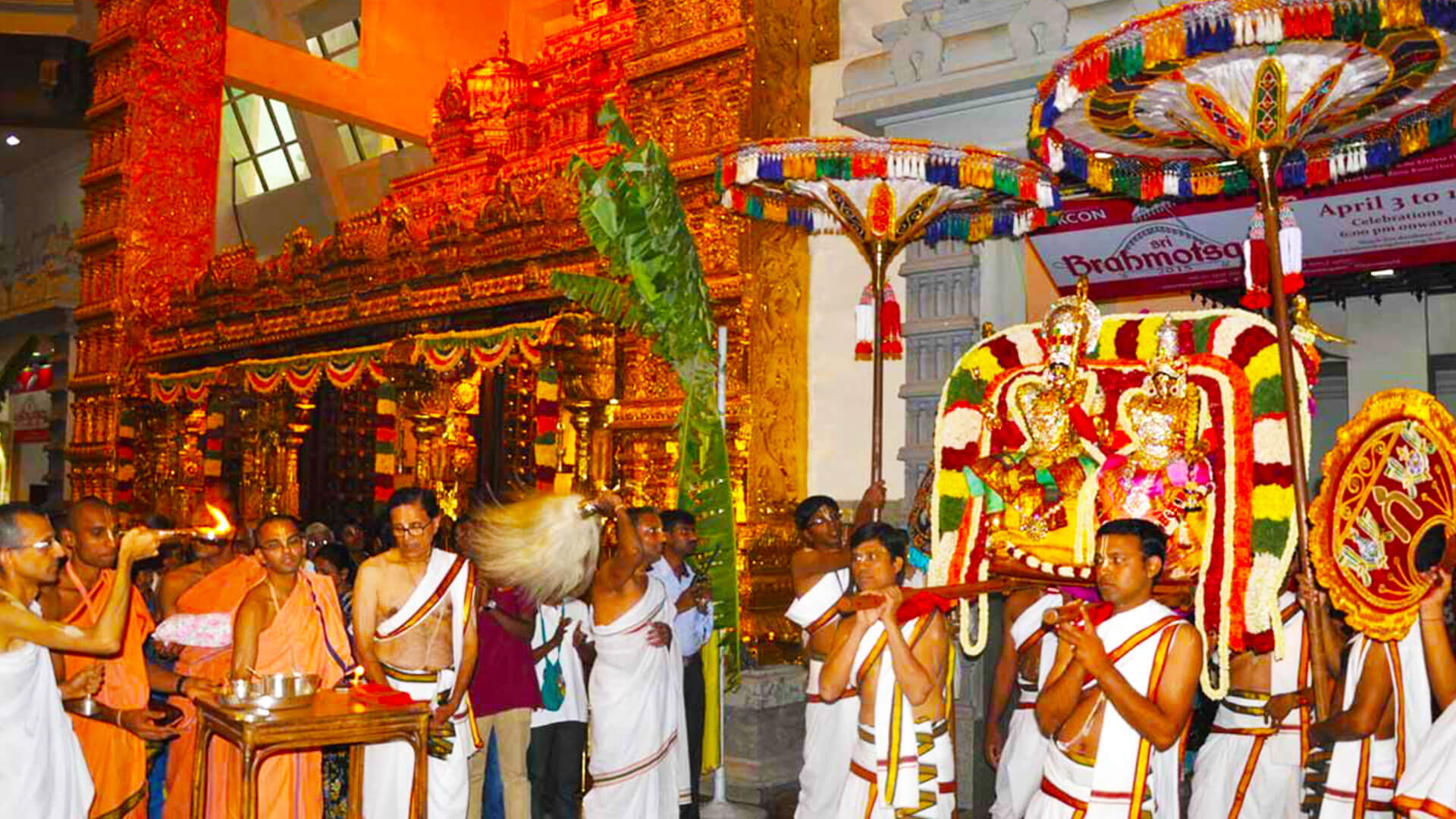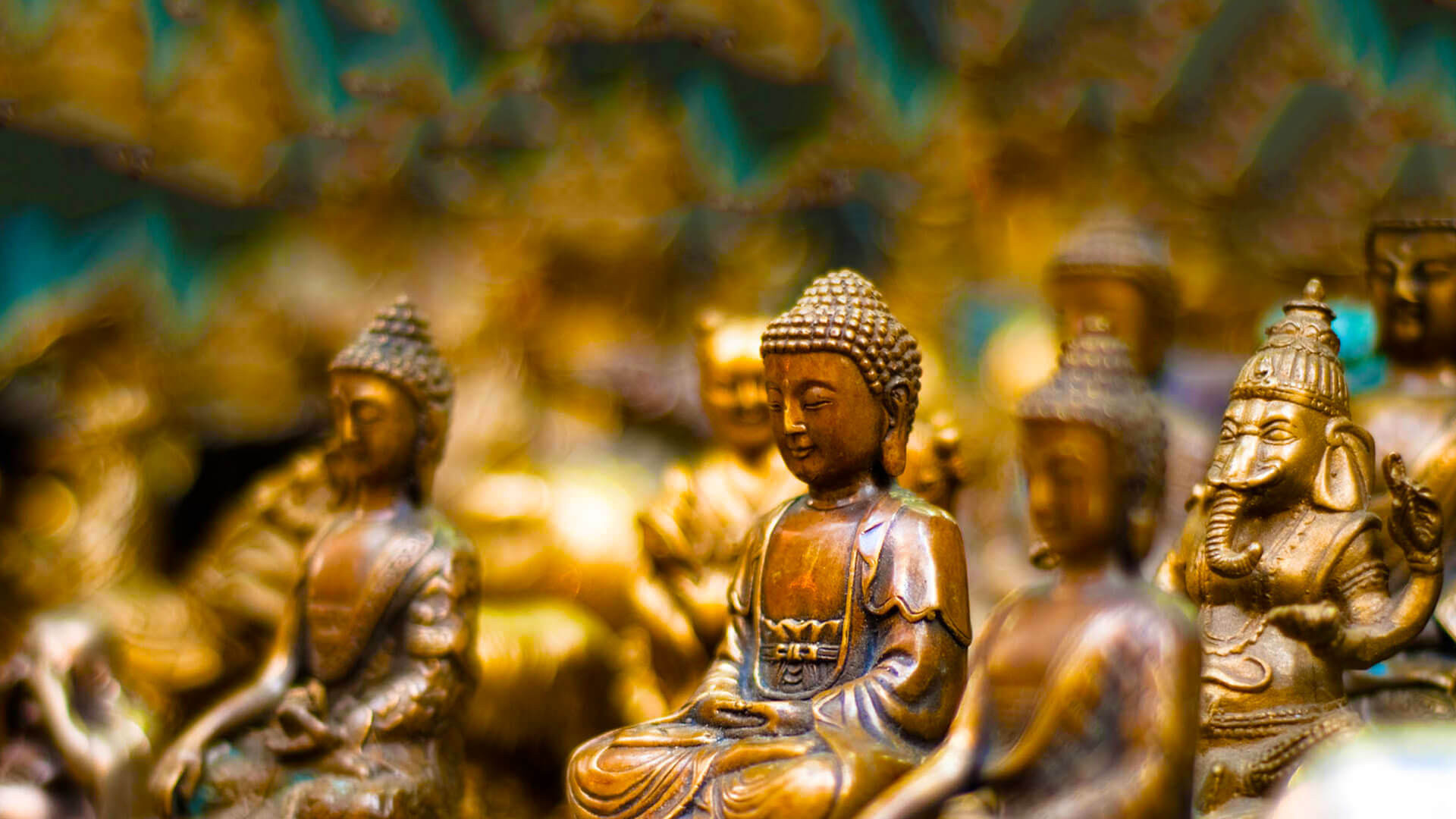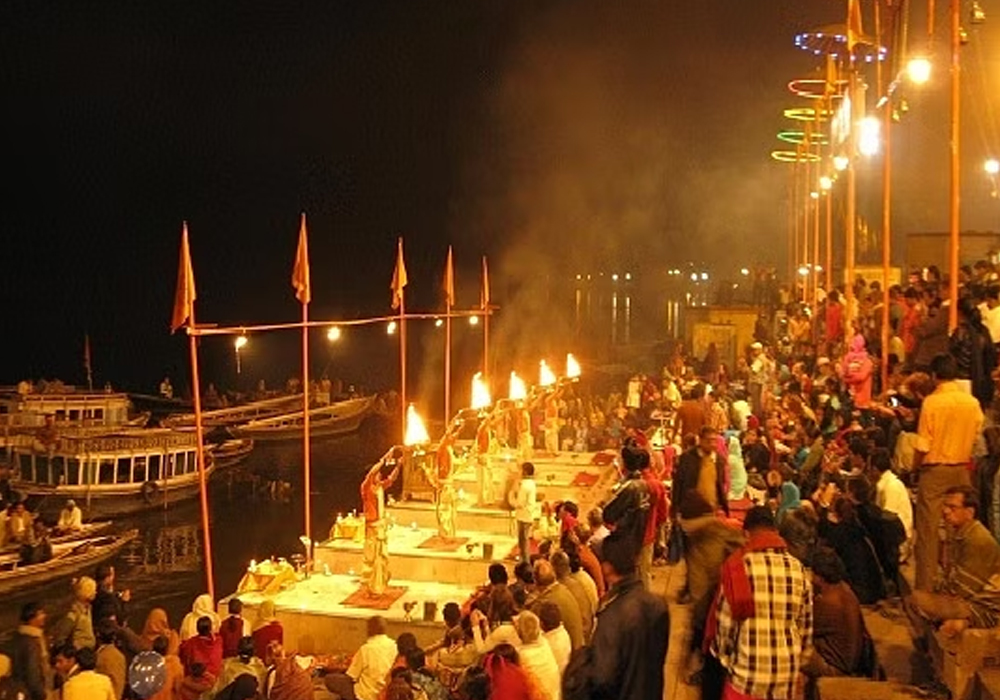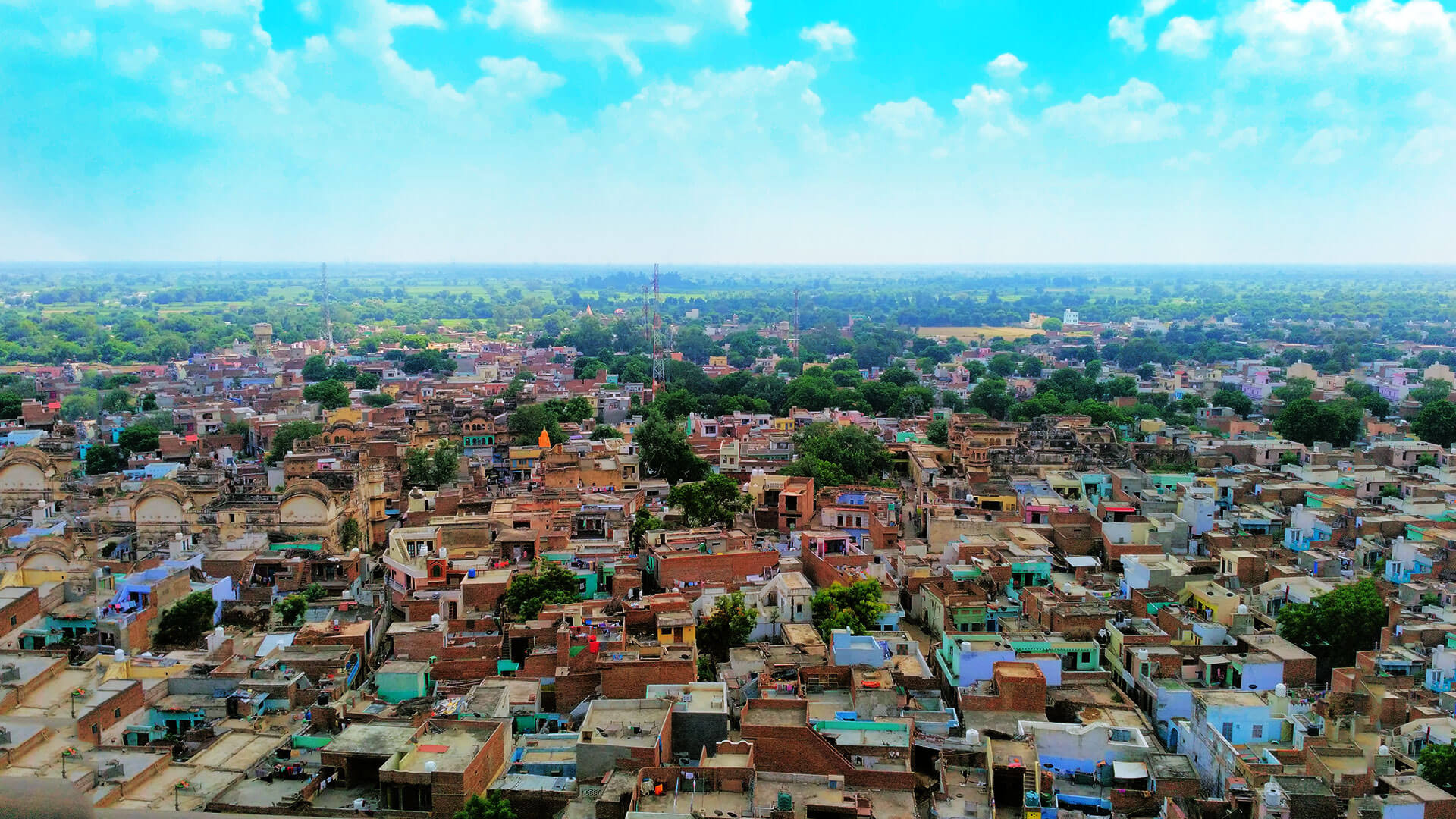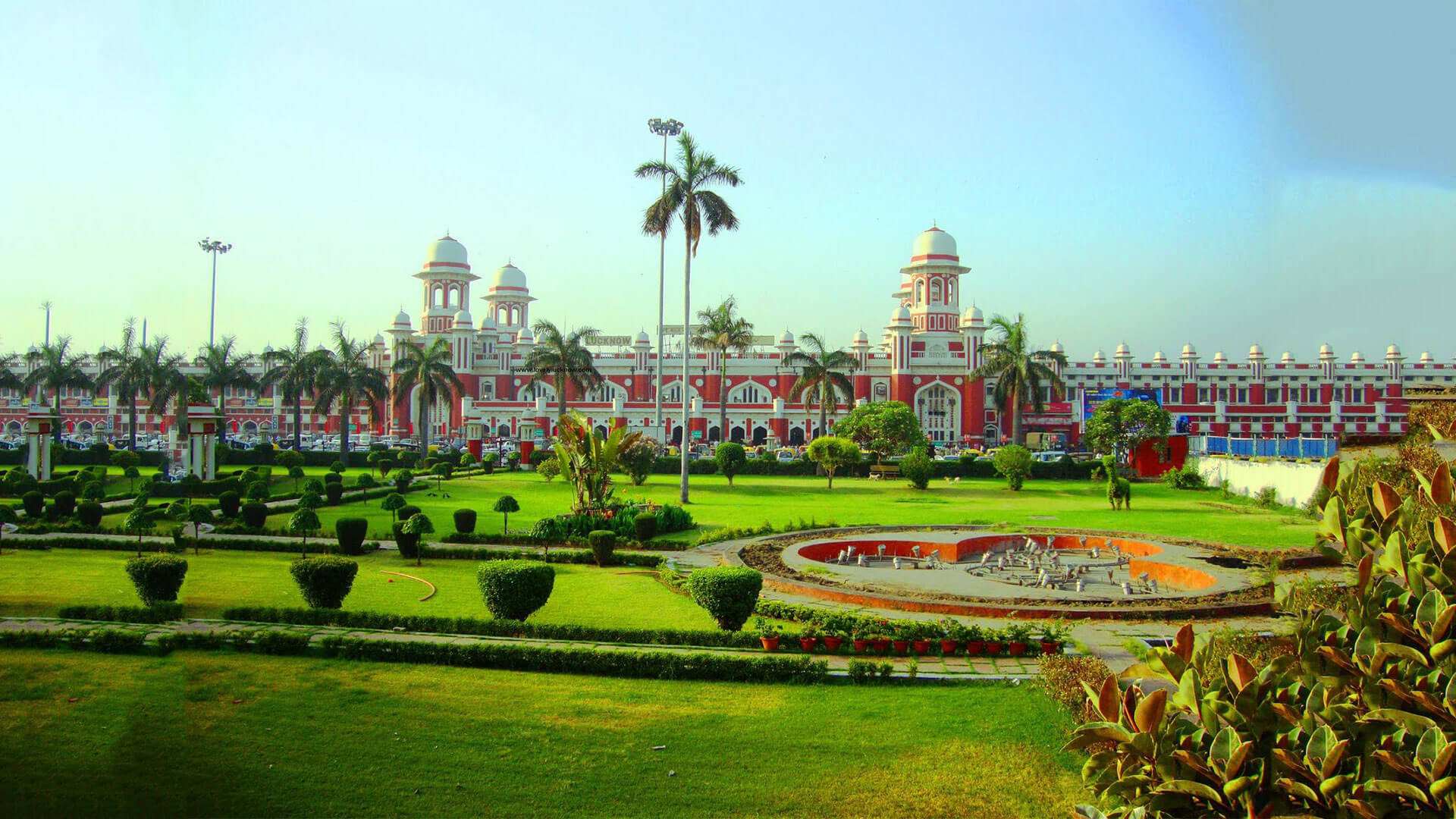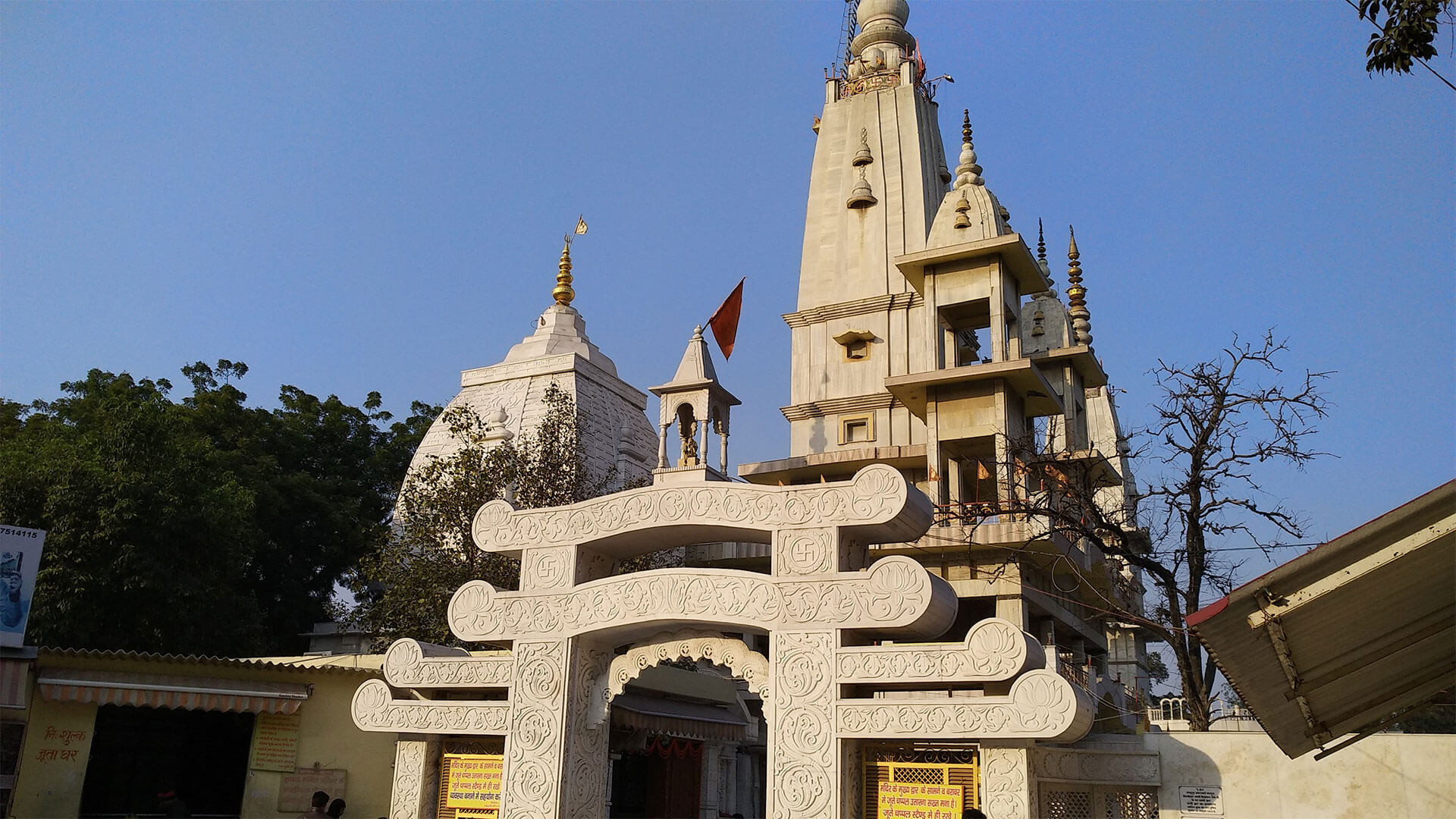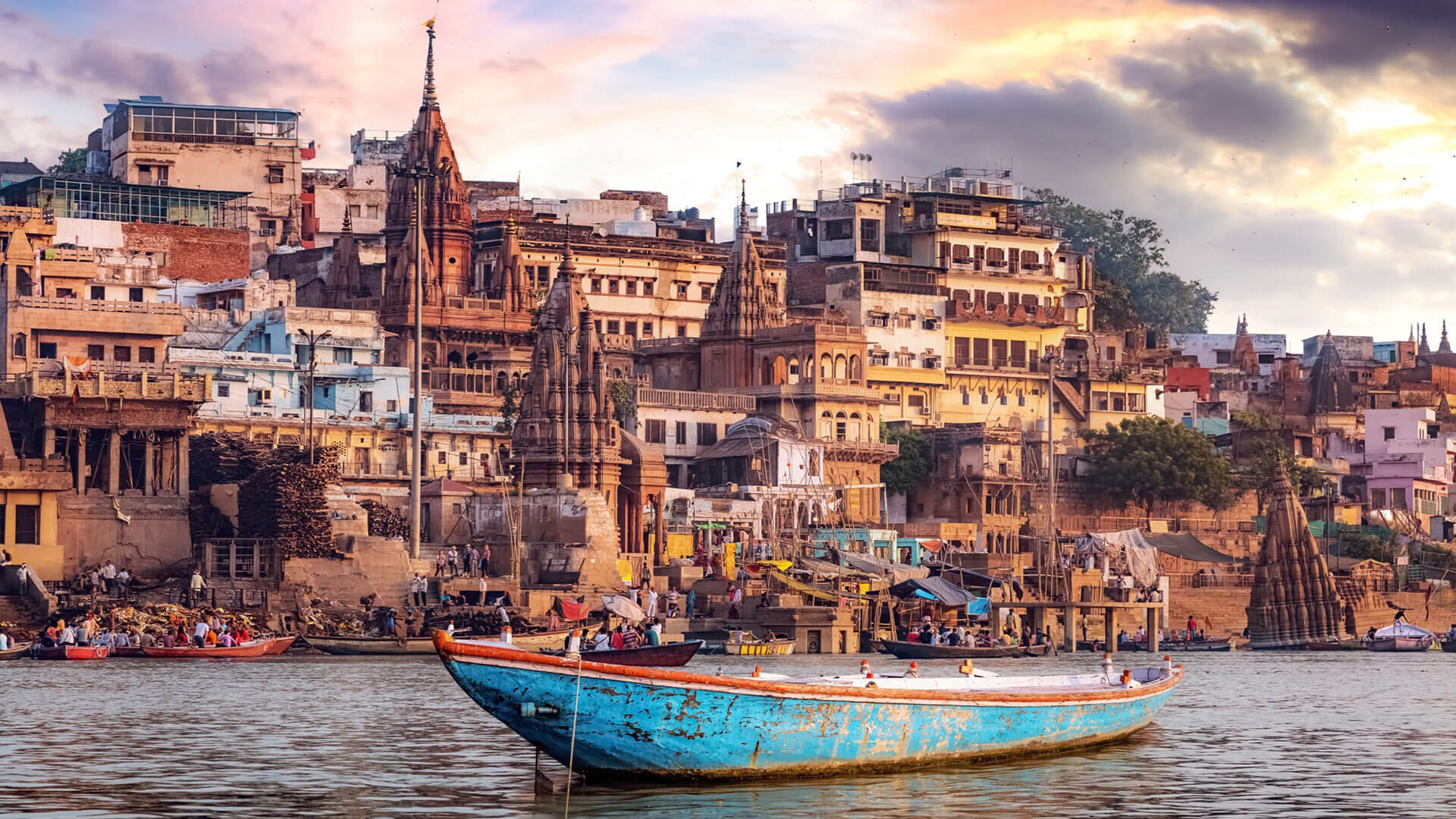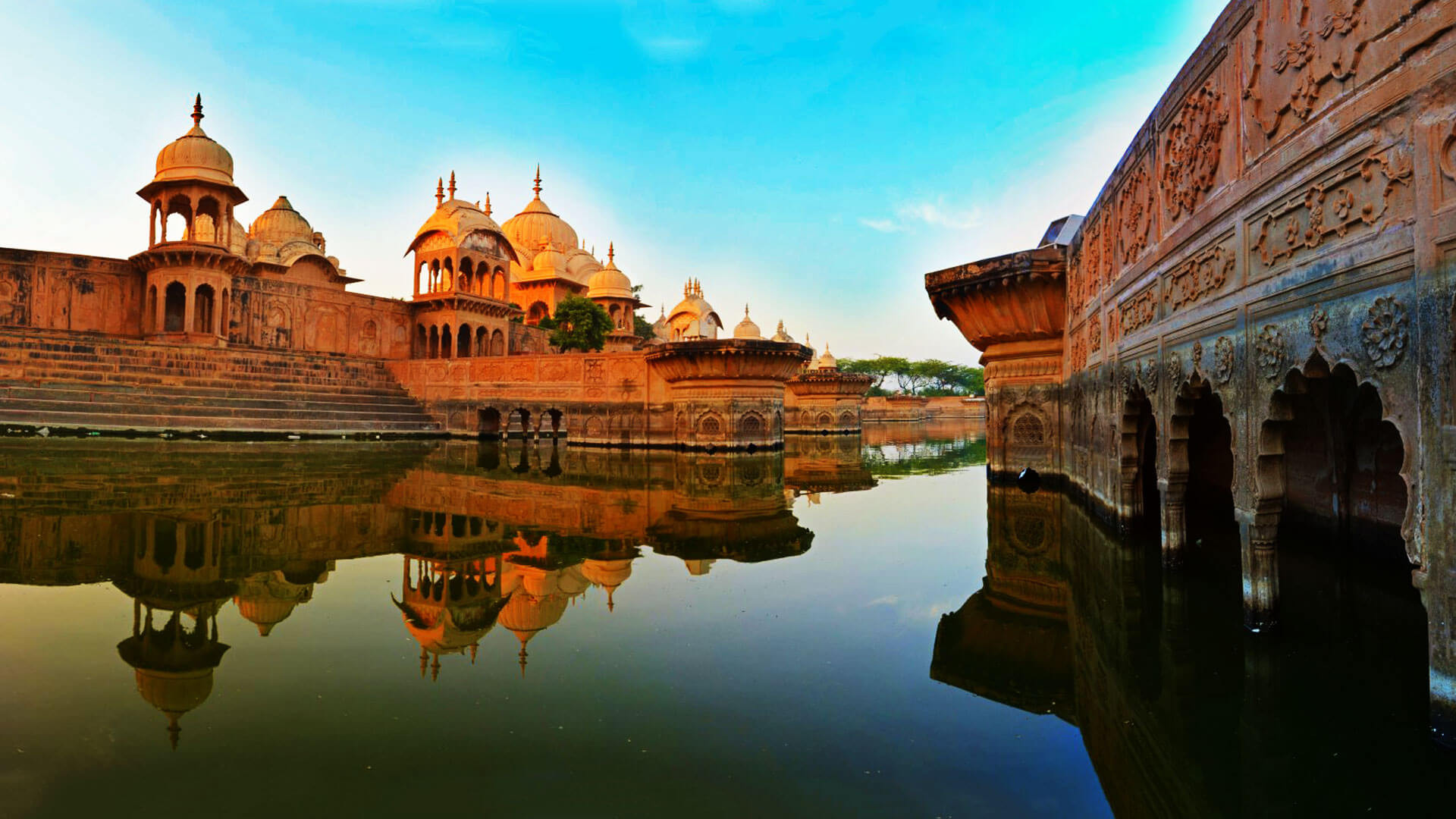Hastinapur is an ancient town located on the banks of the Ganges River, near Meerut in Uttar Pradesh, India. The name Hastinapur comes from two Sanskrit words: "hastina," meaning elephant, and "puram," meaning city, giving it the name "City of Elephants."
This town holds great historical and mythological significance. During the time of the Mahabharata, Hastinapur was the capital of the Kauravas and later the Pandavas, the two main families in the epic story. It is a place deeply connected to Hindu legends and is considered sacred by both Hindus and Jains.
For Jain devotees, Hastinapur is especially important, as it is believed to be the birthplace of three Jain Tirthankaras. Many pilgrims visit the town to pay their respects at the famous Jain temples, such as Shri Digamber Jain Mandir, Jambudweep, and Kailash Parvat.
In addition to its religious significance, Hastinapur is also known for its ancient temples like Pandeshwar Temple and Karna Temple. These temples offer a glimpse into the town’s rich history and cultural heritage. For nature lovers, the Hastinapur Wildlife Sanctuary is a must-visit. It is home to a variety of mammals and birds, making it a great spot for wildlife enthusiasts. Hastinapur is a perfect blend of history, mythology, religion, and nature, offering something for everyone to explore and enjoy.
History of Hastinapur
Hastinapur, situated along the banks of the Ganga River, holds a significant place in Indian mythology and history. It is mentioned in both the Ramayana and ancient texts related to the Mauryan Empire. According to Hindu scriptures, Hastinapur was once the capital of the Kuru Kingdom, ruled by the Kauravas. The famous Mahabharata war was fought for the throne of Hastinapur. After the war, the Pandavas emerged as the rightful rulers and governed the city for over 35 years.
While Hastinapur is deeply rooted in Hindu history, it also holds great importance for the Jain community. It is a major pilgrimage site for Jains, home to sacred places like the Astapad, Lotus Temple, and the Digambar Jain Temple. These temples attract devotees from across the country.
Archaeological excavations by the Archaeological Survey of India have uncovered structures and artefacts dating back to the Mahabharata era, adding more depth to its historical significance. The town is also known for its many ancient temples, including the Karna Temple, Pandeshwar Temple, and Kailash Parvat. In addition to its rich history and religious importance, Hastinapur is renowned for its biodiversity, which can be seen in the Hastinapur Wildlife Sanctuary. This mix of historical, spiritual, and natural beauty makes Hastinapur a fascinating destination for visitors of all interests.
Major Attractions in and Around Hastinapur
Let us discover some of the best hastinapur tourist places so that you can make the most of your visit.
1. Ashtapad
Ashtapad literally means eight steps and it is a sacred place where Bhagwan Rishabhdev attained salvation. The original place is located somewhere in the great Himalayas which is now in Chinese territory. The Ashtapad tirth in Hastinapura is a replica of the original, where people come to offer prayers.
2. Hastinapur Sanctuary
The national park of Hastinapur Sanctuary is a hub of the place’s rich diversity. The national park was founded in the year 1986 and is spread in an area of 2,073km square. Over 350 species of birds can be observed here. The place is a paradise for wildlife and nature enthusiasts and is worth visiting.
3. Digambar Jain Mandir
Located on a hill, this shrine has a statue of Bhagwan Shantinath. The temple is visited by Jain and non-Jain followers from across the country. People come here to offer prayers and witness the idol of Bhagwan in padmasan.
4. Karna Temple
Karna temple is dedicated to Lord Shiva and it is believed that the temple was built during the Mahabharata. Although the temple is as small as a room it attracts thousands of visitors every month.
Best Time to Visit Hastinapur 2025
If you wish to avoid travelling in a hot and humid environment then the months from September to March is the best time to visit Hastinapur.
Things to Do in Hastinapur
- Pandeshwar Temple: Visit this ancient Shiva temple with connections to the Mahabharata era.
- Jain Temples: Explore sacred Jain sites like the Digambar Jain Mandir, Jambudweep, Astapad, and Lotus Temple.
- Kailash Parvat: Discover this major Jain pilgrimage site with beautiful statues and temples.
- Hastinapur Wildlife Sanctuary: Enjoy birdwatching and wildlife photography in this peaceful sanctuary.
- Karna Temple: Learn about the legendary Karna from the Mahabharata at this ancient temple.
- Archaeological Sites: Explore sites revealing artifacts from the Mahabharata period.
- Jambudweep Jain Tirth: Experience Jain cosmology at this unique temple complex.
- Local Culture: Stroll through the town and enjoy local markets for a taste of traditional life.
Activities to Experience in Hastinapur
- Spiritual Tours: Explore the Jain temples and participate in spiritual rituals and ceremonies.
- Heritage Walks: Take guided tours around ancient ruins and historical monuments.
- Wildlife Safari: Enjoy a safari in the sanctuary and spot animals like swamp deer, leopards, and various migratory birds.
How to Reach Hastinapur
Hastinapur is an old town in Uttar Pradesh, that is visited by history buffs, Hindu and Jain devotees, and tourists alike majorly for its spiritual tourist destinations. Destinations that receive great footfall are Ashtapad, Baba Digambar Jain Mandir, and Jambudweep Jain Tirthankar. You too can witness the magnificence and mysticism of these places by arriving here via a good transportation network that connects the city with other nearby cities and states.
Hastinapur is approx. 132km, 1,500km, 1,500km, and 2,200km from Delhi, Mumbai, Kolkata, and Bengaluru. Below mentioned are some of the best and economical transportation modes and routes that you may consider if planning a visit to this ancient city.
By Road
Making plans to visit Hastinapur by your personal car or bike, sounds adventurous and it surely is, courtesy of the motorable and beautiful national and state highways that lead you to the city. Arriving from the following nearby cities you can consider the below-listed route;
- Meerut - 40 km via NH 34
- Noida - 120 km via Mawana Kithaur Hapur Marg
- Delhi - 136 km via NH 34
- Moradabad - 128 km via NH 9
- Kurukshetra - 178 km via NH 709 A
- Haridwar - 121 km via Bijnor Haridwar Road
Apart from private transport one can also travel via govt run or private buses to Hastinapur from various metro cities.
By Air
Delhi’s IGI Airport is the nearest airport to Hastinapur. From the airport, one may take a tourist bus or a tourist taxi to cover another 136km to reach this holy ancient city of Hastinapur. To Delhi’s IGI airport there are direct flights from all the major metro cities of India.
Here is a list of Indian cities from where flights are available to Delhi
- Mumbai to Delhi Flight
- Bangalore to Delhi Flight
- Hyderabad to Delhi Flight
- Chennai to Delhi Flight
- Kolkata to Delhi Flight
By Rail
Meerut city railway station, Muzaffarnagar, and Hapur are the nearest railway stations to reach Hastinapur. Although from all these stations one has to travel another 35km, 45km, and 50km respectively to reach Hastinapur. Listed below are the direct trains that you may consider to reach Meerut city railway station;
- Delhi to Meerut City - Dehradun Shtbdi, Nanda Devi Express, Ujjaini Express
- Dehradun to Meerut City - NDLS Janshatabdi
- Haridwar to Meerut City - Kalingautkal Express
- Bulandshahr to Meerut City - Sangam Express
- Agra to Meerut City - Chattisgarh Express, Panchvalley Pass, Utkal Express
You can plan your trip and create your own route to the city with Adotrip’s technically driven circuit planner.
Conclusion
A trip to Hastinapur is a journey through India's rich history and cultural heritage. From exploring ancient temples to embracing the tranquility of the wildlife sanctuary, Hastinapur offers a diverse range of experiences for every traveler. Plan your Hastinapur tour and uncover the tales of the Mahabharata while enjoying a serene getaway.
Frequently Asked Questions About Hastinapur
Q1: Where is Hastinapur located?
A1: Hastinapur is located on the banks of the Ganges River, near Meerut in Uttar Pradesh, India.
Q2: Why is Hastinapur famous?
A2 : Hastinapur is famous for its association with the Mahabharata as the capital of the Kuru Kingdom, as well as being an important religious site for both Hindus and Jains.
Q3: What are the main attractions in Hastinapur?
A3: Key attractions include the Pandeshwar Temple, Karna Temple, Kailash Parvat, Jain temples like Digambar Jain Mandir and Jambudweep, and the Hastinapur Wildlife Sanctuary.
Q4: What is the significance of Hastinapur in the Mahabharata?
A4: Hastinapur was the capital of the Kauravas and Pandavas in the Mahabharata. The great war of the Mahabharata was fought for the throne of Hastinapur.
Q5: Why is Hastinapur important to Jains?
A5: Hastinapur is considered sacred by Jains as it is believed to be the birthplace of three Jain Tirthankaras and has several important Jain temples like Astapad, Lotus Temple, and Digambar Jain Mandir.
Q6: Can tourists visit the Hastinapur Wildlife Sanctuary?
A6: Yes, tourists can visit the Hastinapur Wildlife Sanctuary, which is home to various species of mammals and birds, and is a great spot for nature lovers and birdwatchers.
Q7: What historical discoveries have been made in Hastinapur?
A7: Archaeological excavations in Hastinapur have uncovered structures and artifacts that are believed to date back to the Mahabharata period.
Q8: How far is Hastinapur from Delhi?
A8: Hastinapur is approximately 120 kilometers from Delhi, making it accessible for a day trip or weekend getaway.
Q9: What is the best time to visit Hastinapur?
A9: The best time to visit Hastinapur is between October and March, when the weather is cooler and more pleasant for sightseeing and wildlife tours.
Q10: Are there any festivals celebrated in Hastinapur?
A10: Yes, religious festivals like Mahavir Jayanti (celebrated by Jains) and other Hindu festivals are celebrated with great enthusiasm in Hastinapur.
Blogs

Varanasi Trip Quotes And Caption For Instagram

17 Best Places To Visit In Agra 2024

Best Things To Do In Agra Other Than Witnessing Taj Mahal

10 Famous Food Of Uttar Pradesh You Must Try In 2025

Kumbh Mela : Rituals, Significance, and Best Time to Visit
Nearby Stays

Hotel Heaven Hastinapur

Hotel Harmony Inn
Opp. Nai Sadak, Garh Rd, Meerut, Uttar Pradesh 250...

Amanta's
Meerut Bypass Rd, New Sainik Colony, Meerut, Uttar...

Hotel MD Delux
Abu Ln, Sadar Bazaar, Meerut, Uttar Pradesh 250001


